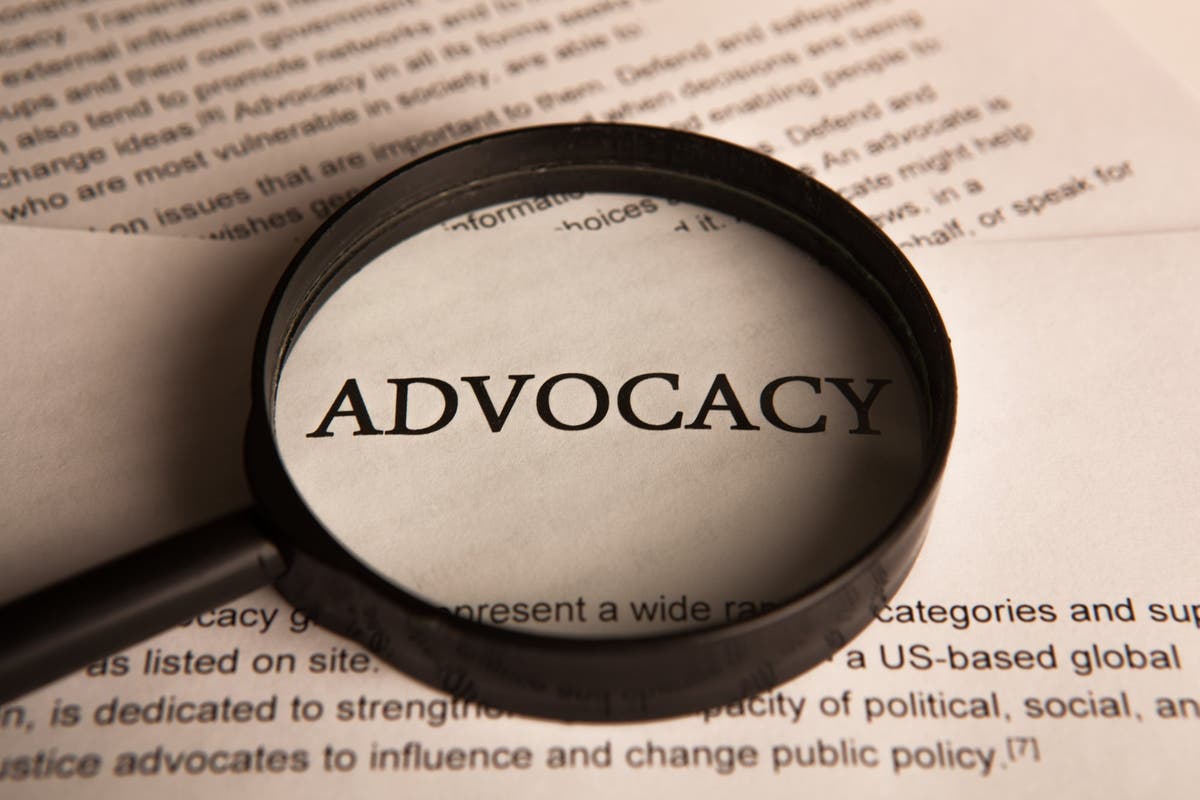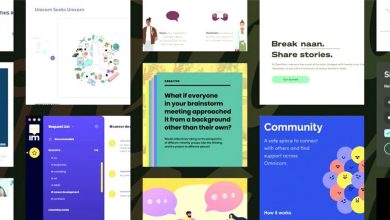5 ways to create an employee advocacy program that works

Many businesses make the mistake of overlooking a significant and obvious potential marketing asset — their employees. Consumers often view a brand’s employees as brand experts and are likely to be honest about the services and products you offer. When employees share positive information about their company, consumers are more likely to perceive the brand as a trusted solution to their pain points.
Employee advocacy is the promotion of a company by the people who work for it. It turns satisfied employees into advocates by having them help create a credible narrative that is about more than product promotion. When done correctly, employee advocacy is a powerful way to elevate the reputation of your brand into a position of leadership and influence. Let’s take a deeper look into why it works and how to do it right.
Contents
Why employee advocacy is effective
The basic tenets of employee advocacy are straightforward. Humans are social beings and usually trust in personal connections. For this reason, they are more likely to trust individuals they know over those that they don’t. In a recent survey, 84 percent of consumers value product or service recommendations from friends and family above other forms of advertising. 77 percent of consumers are also more likely to buy a product or service after hearing about it from a person they trust.
A survey by the Marketing Advisory Network revealed that leads developed via employee social marketing often convert seven times more than other leads. Your staff members are already connected to thousands of people. Given that 20 percent to 50 percent of buying choices are made through peer-to-peer marketing, having an employee advocacy system in place can help your brand win credibility and grow your reach by tapping into those networks.
As an example of an effective employee advocacy program in action, AT&T launched Social Circle in 2009. They reached out to their social media savvy employees to get them involved in the company marketing. The goal of the program was to boost the brand’s reputation. As of 2014, Social Circle had an estimated ROI of over $1 million, 20,000 social media posts, and over 400,000 audience engagements.
5 ways to create an employee advocacy program that works
1. Create a company culture that your employees will get behind
Company culture plays a key role in the success of your business. It affects nearly all aspects of an organization. From recruiting exceptional talent to improving worker satisfaction, company culture is the backbone of a happy workforce. Without a positive workplace culture, most of your staff members will struggle to understand the real value of what they do — and this could lead to a decline in performance.
Today’s workforce has high expectations of their employers, which goes far beyond paychecks. Your employees want to know that they are making a significant difference within the company and within society as a whole. Creating a credible corporate culture that makes your workforce proud sets a solid foundation for employee advocacy.
2. Develop your framework: Goals and strategy
The first part of your employee advocacy strategy involves determining the program’s specific goals and key performance indicators.
Some common goals of employee advocacy programs include improving organic reach, optimizing marketing costs, and increasing relevant traffic from social media. The program can also help increase social shares of your blog posts and improve your brand’s reputation.
Once you’ve focused on the goals, you must determine which metrics to measure in order to determine if your program is effective.
Key metrics you must pay attention to include organic reach, top contributors, overall engagements, traffic, and brand sentiment. These KPIs will help you to determine how your employee advocacy program is performing and whether adjustments are necessary.
Part of your strategy will be determining which employees participate in the program. Consumer-facing roles like marketing, customer service, and sales should be prioritized. This way, your program will reach a relevant audience and increase its chances of success.
3. Choose your tactics and set guidelines
The advent of the internet and social media entirely changed the way companies utilize employee advocacy. Though older tactics like giveaways and incentivizing still work in a digital format, the reality is that companies must now incorporate social media into the equation. Your target customers often spend a lot of their free time on Twitter, Instagram, Facebook, and other social platforms. For this reason, social media is the prime place for your brand to get in front of them.
No matter which social media channels you choose, your employees need to know what message they are supposed to communicate and the best way to communicate it. Specify the language they should use, frequency of posting, and how they should respond to various reactions from the target audience.
4. Maintain, measure, modify
The initial excitement of rolling out a credible employee advocacy program will not last forever. Eventually, your staff members will start to share your brand message on social media less frequently and may stop keeping the target audience engaged. To minimize drop-offs, your program needs employee liaisons whose duty is to be proactive in maintaining the program.
Whether you use an internal messaging system such as Slack or prefer email, it’s important to consistently remind your advocacy team about the program’s objectives and keep them up-to-date on the right content to share.
As with all other marketing efforts and programs, it’s imperative to regularly measure the performance of your company’s employee advocacy program. Analyzing the right key performance indicators will help you assess if the program is worth the effort and resources you are investing. Analysis will also uncover ways of improving its performance. Don’t be afraid to modify the program based on your findings, and do more of what works best.
5. Avoid these pitfalls
To successfully run an employee advocacy program, you’ll want to identify and avoid the common pitfalls that could make the entire program ineffective. These include:
Over-reliance on incentives – It is tempting to gamify your company’s advocacy program to encourage worker participation. Though this can offer some initial push, putting incentives at the forefront of your advocacy program efforts isn’t recommended. This is because it can become very expensive over the long run.
Failure to curate content – The chances are that your employees are constantly inundated with calls, emails, social media posts, texts, and other messages. That makes it challenging for them to find time to create content that resonates with your brand. For this reason, it’s up to you to issue the content guidelines and cultivate #hashtags that help them create resonant content for the target audience.
Not supporting the advocacy program – The popular concept of, “If you create it, they will come” does not apply in employee advocacy programs. Many companies do an excellent job in promoting the program during its launch, but then fail to keep it running. Keep in mind that the attention of your employees is split among various tasks, so it’s easy to forget about your program if it’s not a priority for leadership.
Benefits of employee advocacy that works
There are many benefits to employee engagement in a successful advocacy program. Your brand can expand its reach on Facebook, Twitter, LinkedIn, Instagram, and other social media channels. Instead of continually paying for social media advertising or paying expensive influencers, your staff members can promote your brand to their followers.
When your employees promote brand initiatives on social networks, they already have an in-depth understanding of your brand message and company’s mission. Their role in your social media marketing strategy is likely to get you better results. They can capitalize on the relationships they already have with your clients to turn one-time customers into repeat clients.
If a brand social media account posts about itself, a larger number of consumers are likely to perceive it the same way they perceive an ad. However, if one of your friends, employees, or someone your brand follows shares a post about your business, consumers will view the content in another light. They will perceive it as a recommendation from someone who understands the brand and trusts what they say.
Employee advocacy programs also foster better employee engagement. Putting your staff members in charge of increasing your brand’s social media presence demonstrates your trust in their abilities. Your employees are likely to feel important to your brand, and this will positively contribute to your company culture.
From the sales perspective, benefits of employee advocacy programs include thought leadership, a better understanding of your market, expanded reach, increased audience engagement, and an improved reputation. Of course, the ultimate payoff is in driving more leads, improving sales, and higher revenues.
Making it work
An employee advocate program is a potential marketing tool for any organization. Careful planning, communication with employees on all facets of the program, focused execution, regular measurement, and not being afraid to change things are essential to your chances of success.
The benefits of an employee advocacy program that actually works go far beyond social media marketing. The increased employee engagement and satisfaction that results are favorable to a company’s sustainable growth.
Ultimately, a well-thought-out employee advocacy program will do the same or better for a brand than dealing with paid influencers, but at a lower cost. If the program is well-managed and you have a solid strategy, you can easily create more opportunities for business success.
Source : Adobe








